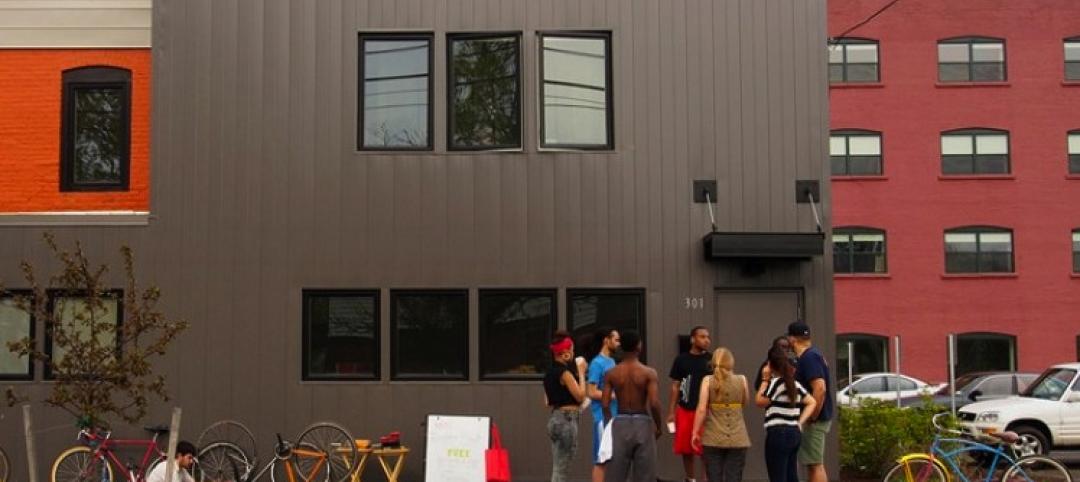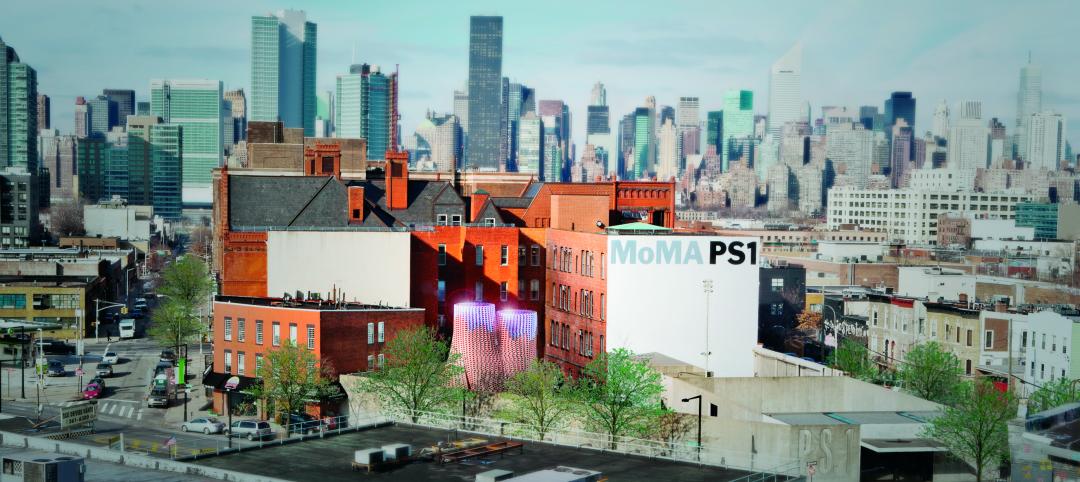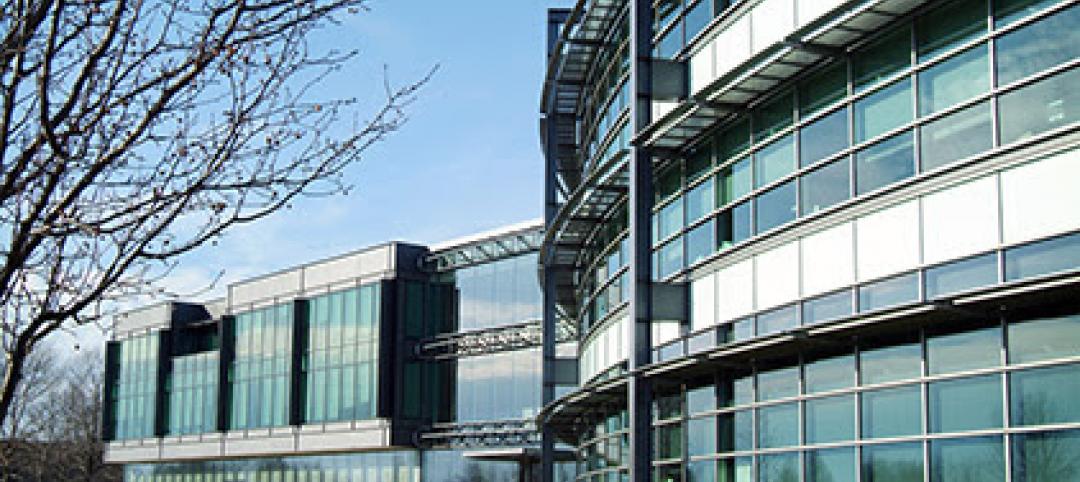Terranova Ranch in Fresno, Calif., grows more than 25 different crops on 6,000 acres. The company, which started in 1981, has focused its attention lately on methods that keep its soil, water, and air quality as healthy and sustainable as possible.
The design for Terranova Ranch’s new office pavilion is the first net-zero carbon and net positive energy project by Paul Halajian Architects (PHA), and the client’s design choices were informed by the use of cove.tool’s web-based building performance app.
Terranova Ranch’s aimed for a 100 percent reduction in operational carbon emissions, and the architect provided several options toward meeting or exceeding that goal. (Cove.tool shared some of the details of this case study with BD+C.)
GOING BEYOND CODE MINIMUMS
Initially, the energy model for the 5,800-sf office building was designed to follow code minimum baseline assumptions from California’s Title 24, version 2019, which offered a carbon reduction of 12 percent. PHA’s project architect conducted several analyses on possible improvements to reduce the overall Energy Use Intensity (EUI), which in this model was 42.52 kBtu/sf/year.
These analyses measured the impacts of the building’s HVAC, lighting, equipment, hot water, fans, and pumps. The first proposed design change was an envelope upgrade, from the mandatory minimum of R-19 to R-30 by adding two inches of Expanded Polystyrene (EPS) foam board to the exterior walls; and three inches of foam board insulation to the roof, which increased its R-value from 30 to 41. These changes would increase the building’s overall carbon reduction in base design to 20 percent and reduce the EUI to 38.
GLAZING’S BENEFITS DIDN’T PENCIL
The second option the architect investigated for Terranova Ranch combined the proposed envelope upgrade with improved glazing using Solarban 72 Acuity glass or Starphire glass with a u-value of 0.28 and solar heat coefficient of 0.28. (The baseline requirement is Solarban 60.) However, using cove.tool analysis tool, the architect determined that the whole-building EUI would have only reduced to 37, and only increased the carbon reduction by 2 percent from the first option. There were also cost considerations that made the glazing option less favorable.
The third upgrade option explored introduced 2,200 sf of monocrystalline solar panels, angled at a 15-degree incline atop a shaded parking structure. This option would reduce the building’s carbon emissions by 84 percent (from option No. 2’s 22 percent) and decrease the EUI to 7 form 37. Terranova Ranch was enthusiastic about this option.

A fourth alternative explored introducing heat recovery by adding an energy recovery ventilator in the ceiling. This option allowed for a carbon reduction of 103 percent and an EUI score of negative 1.5. The client agreed to move forward in the building’s design with each option except the glazing upgrade.
SUNLIGHT EXPOSURE WILL REDUCE BUILDING’S LIGHTING NEEDS
Along with the energy study, the architect conducted other analyses. Using cove.tool software, the architect observed that 85 percent of the office building’s interior would have access to “quality exterior views,” which in turn would earn the product LEED Views Credit. A daylight analysis of the architect’s design also showed that the building would be exposed to up to 12 hours of sunlight per day, reducing the design’s artificial lighting requirement.


While most clients might not be as sustainably inclined as Terranova Ranch, conducting data-driven analyses can be fruitful as a common practice that allows the design team and client to delve into different design scenarios to achieve an intended performance goal.
Construction on the office pavilion was scheduled to begin in late spring. The architect and client did not disclose construction costs.
Related Stories
| Oct 16, 2014
Perkins+Will white paper examines alternatives to flame retardant building materials
The white paper includes a list of 193 flame retardants, including 29 discovered in building and household products, 50 found in the indoor environment, and 33 in human blood, milk, and tissues.
| Oct 15, 2014
Harvard launches ‘design-centric’ center for green buildings and cities
The impetus behind Harvard's Center for Green Buildings and Cities is what the design school’s dean, Mohsen Mostafavi, describes as a “rapidly urbanizing global economy,” in which cities are building new structures “on a massive scale.”
| Oct 14, 2014
USGBC awards individuals, firms for leading the way in sustainable construction
This year’s Leadership Award recipients include Christine Ervin, David Orr, Jim DeCesare, Lloyd Alter, Tom Paladino, The Near Westside Initiative, and Mars, Inc.
| Sep 29, 2014
Organically grown bricks, urban flood control system among 2014 Holcim Award winners
The 13 Holcim Award winners for North America illustrate how sustainable construction continues to evolve.
| Sep 29, 2014
Report finds links between office design, health and productivity
A new report from the World Green Building Council finds “overwhelming evidence” to support office design as a significant influencer of the health, wellbeing and productivity of staff.
| Sep 16, 2014
Studies reveal growing demand for LEED-credentialed professionals across building sector
The study showed that demand for the LEED Accredited Professional and LEED Green Associate credentials grew 46 percent over a 12-month period.
| Sep 15, 2014
Sustainability rating systems: Are they doomed?
None of the hundreds of existing green building rating systems is perfect. Some of them are too documentation-heavy. Some increase short-term project cost. Some aren’t rigorous enough or include contentious issues, writes HDR's Michaella Wittmann.
| Sep 12, 2014
Armstrong first in Pennsylvania to earn LEED Platinum recertification from USGBC
The Armstrong facility is the first building in Pennsylvania and among only 17 buildings globally to achieve recertification at the highest level possible under USGBC’s LEED-EBOM program.
| Sep 7, 2014
USGBC + American Chemistry Council: Unlikely partners in green building
In this new partnership, LEED will benefit from the materials expertise of ACC and its member companies. We believe this has the potential to be transformational, writes Skanska USA's President and CEO Michael McNally.
| Sep 3, 2014
New designation launched to streamline LEED review process
The LEED Proven Provider designation is designed to minimize the need for additional work during the project review process.

















